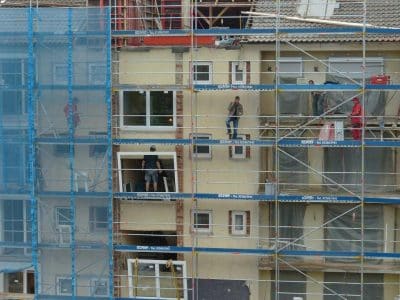
Encounters with wildlife can be both thrilling and concerning, especially when they occur within the confines of your home or property. From raccoons and squirrels to bats and birds, unwanted wildlife can cause damage, spread diseases, and pose safety risks to you and your family. In such situations, enlisting the help of a professional wildlife removal service is essential. But with so many options available, how do you choose the right one? In this blog, we’ll discuss key factors to consider when selecting a wildlife removal service to ensure effective and humane removal of wildlife from your property.
Experience and Expertise
When choosing a wildlife removal service, experience and expertise are paramount. Look for companies with a proven track record of successfully handling wildlife removal in your area. Experienced professionals understand the behavior, habits, and habitats of local wildlife species, allowing them to implement effective removal strategies while minimizing risks to both humans and animals. Additionally, expertise in wildlife biology, humane trapping methods, and safe handling practices ensures that wildlife is removed safely and ethically.
- Behavioral Knowledge: Experienced professionals can accurately identify the species involved and understand their behaviors, which is crucial for effective removal. For example, squirrels may have different nesting habits compared to raccoons, and bats have specific roosting preferences.
- Customized Solutions: With experience, companies can provide tailored solutions for different types of wildlife, ensuring that removal methods are species-specific and effective.
- Reduced Risks: Expertise reduces the risk of injury to both the wildlife and the residents. Professionals know how to handle aggressive or scared animals without causing harm.
Licensing and Certifications
Wildlife removal is a specialized field that requires proper licensing and certifications to ensure compliance with legal and ethical standards. Before hiring a wildlife removal service, verify that they are licensed to operate in your state or jurisdiction and hold relevant certifications from reputable organizations. Licensed professionals are trained to handle wildlife removal safely and legally, adhering to regulations governing the trapping, relocation, and disposal of wildlife. By choosing a licensed and certified provider, you can have peace of mind knowing that the removal process will be conducted in accordance with industry standards and best practices.
- State and Local Licensing: Ensure the service is licensed by your state’s wildlife agency. Each state has specific regulations, and a licensed company will be up-to-date on these requirements.
- Professional Certifications: Look for certifications from professional bodies such as the National Wildlife Control Operators Association (NWCOA) or similar organizations. These certifications indicate a commitment to ongoing education and adherence to best practices.
- Insurance: Verify that the company has proper insurance coverage, including liability insurance. This protects you in case of any accidents or damages during the removal process.
Humane Practices and Ethical Considerations
Ethical treatment of wildlife is a fundamental aspect of responsible wildlife removal. Choose a wildlife removal service that prioritizes humane practices and ethical considerations in their approach to wildlife management. Humane trapping methods, such as live trapping and relocation, minimize stress and harm to animals, ensuring their welfare throughout the removal process. Additionally, reputable wildlife removal services prioritize the safety of both humans and animals, taking precautions to prevent unnecessary harm or injury during removal operations.
- Live Trapping: Opt for services that use live traps instead of lethal methods. Live traps allow animals to be captured without injury and relocated to a more suitable habitat.
- Relocation Policies: Ensure the company follows ethical relocation practices, such as relocating animals far enough away to prevent their return and choosing habitats that support the species.
- Exclusion Techniques: Humane services often use exclusion techniques, such as one-way doors and barriers, to allow animals to leave your home without re-entering.
Comprehensive Services and Solutions
Wildlife removal is often just one aspect of addressing wildlife-related issues on your property. Look for wildlife removal services that offer comprehensive solutions to prevent future infestations and mitigate risks associated with wildlife presence. This may include wildlife-proofing measures such as sealing entry points, installing deterrents, and implementing habitat modifications to make your property less attractive to wildlife. By addressing underlying factors contributing to wildlife intrusion, comprehensive wildlife removal services help prevent recurring problems and safeguard your home for the long term.
- Entry Point Sealing: Effective wildlife removal services will identify and seal potential entry points, such as gaps in the roof, vents, and foundation cracks, to prevent future intrusions.
- Habitat Modification: Professionals may recommend changes to your landscaping, such as removing food sources, trimming trees that provide easy roof access, and clearing debris that can shelter wildlife.
- Regular Inspections: Some companies offer regular inspections to monitor for signs of wildlife activity and address issues before they become serious problems.
Response Times and Availability
Prompt response times are crucial when dealing with wildlife issues, as delays can lead to increased damage and safety risks. Choose a wildlife removal service that offers quick and efficient response times, ensuring that urgent situations are addressed promptly. Additionally, availability is important; look for services that provide 24/7 emergency assistance, as wildlife encounters can occur at any time.
- Emergency Services: A reliable company should offer emergency services and be available to respond quickly, especially in situations where there is immediate danger or significant property damage.
- Flexible Scheduling: Services that offer flexible scheduling can accommodate your needs and ensure timely intervention.
- Customer Support: Excellent customer support, including after-hours availability, ensures you can get assistance and advice when you need it most.
Customer Feedback and Reputation
Customer feedback and reputation are valuable indicators of a wildlife removal service’s reliability and quality. Research reviews and testimonials from previous clients to gauge their satisfaction with the service. Positive feedback and a strong reputation suggest that the company consistently delivers effective and humane wildlife removal solutions. Additionally, consider seeking recommendations from friends, family, or local community groups who have had similar experiences.
Detailed Assessment:
- Online Reviews: Look for reviews on multiple platforms, such as Google, Yelp, and Better Business Bureau, to get a comprehensive view of the company’s performance.
- Word-of-Mouth Recommendations: Personal recommendations from trusted sources can provide insights into the company’s reliability and effectiveness.
- Case Studies: Some companies provide case studies or success stories that demonstrate their ability to handle various wildlife issues effectively.
Final Words
Choosing the right wildlife removal service is crucial for effectively and responsibly addressing wildlife-related issues on your property. By considering factors such as experience, licensing, humane practices, comprehensive solutions, response times, and customer feedback, you can select a wildlife removal service that meets your needs and ensures the safe and ethical removal of wildlife from your home. How to choose the right wildlife removal service involves evaluating these key aspects to make an informed decision. With the help of a reputable wildlife removal service, you can protect your property, safeguard your family, and coexist peacefully with wildlife in your environment.









